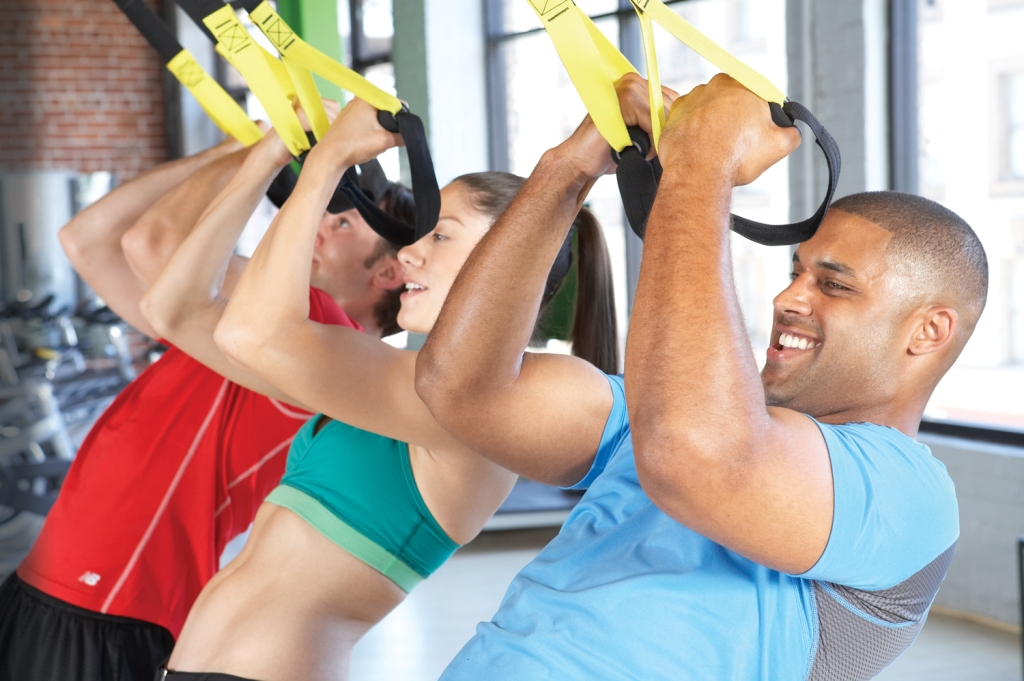Now in its ninth consecutive year, the American College of Sports Medicine’s (ACSM) annual survey recently published its latest influx of results to help guide fitness professionals through important decisions and begin preparations for the year ahead. Highest in the trends rank was bodyweight training. TRX shares with FitPro a variety of session examples for you to try at home.
*Gain insight into a TRX and ViPR integrated training workout session at the end of the article.
Upfront
“By way of design, we’re built for bodyweight training,” recalls Kesh Patel in The Complete Guide to Bodyweight Training.1 Envisage our upright postures, helping to give us the capacity and flexibility to fully explore our environment. Explorations draw on the simple skills of pushing, pulling, squatting, bending, twisting and balancing our own bodies. However, bodyweight training is far more than just adding a few press-ups and pull-ups to your training programme. According to Patel, in the past decade the growing understanding of biomechanical principles has meant that bodyweight training has acquired ‘cult’ status in certain fitness circles. Key drivers in the creation of bodyweight culture are said to include the art of gymnastics, dance, circus, martial arts and Parkour. These elements have been fundamental in the creation of bodyweight culture and its cross-over to mainstream fitness. 1
Bodyweight training is said to enhance physical and physiological fitness and mental health in any age group, as well as offer a lot of benefits that resistance training can’t.
According to Patel, bodyweight training helps to trigger fast-twitch fibres for poise, power and quickness. An effort doesn’t have to be ‘fast’ to call your fast-twitch fibres into play. Type IIX (fast twitch, formerly called type IIB muscle fibres) have the fewest mitochondria and therefore have poor fatigue resistance. Type IIX fibres rely more on the glycogen and glucose and less on fat burning. However, they hypertrophy (enlarge) more readily in response to resistance exercise and can contribute to overall lean muscle mass. Muscles with more type IIX fibres can grow thicker and contract faster, proving to be powerful muscles. Lemond and Hom make comment that, “although type I fibres have abundant mitochondria, resist fatigue and also burn fat exceedingly well, they also tend to be thinner in cross section and are therefore less powerful.”2 Every-day tasks incorporate slow-twitch muscles, so think low power activities without any fatigue. So, in a sense, the fast-twitch muscles will come into play when a stronger force is required. On reflection, it does depend on the type of exercise the individual is performing in their session. As an example, a push-up clap brings in fast-twitch muscle fibres and a standard controlled push-up brings in slow to fast twitch; whereas jumping jacks would be fast twitch, deep squat lunges would be slow twitch.
Momentum
A key distinguishable factor to help build speed is, quite simply, momentum. This can be achieved through the maintenance of the correct and tight body shape. Drilling the bodyweight exercises from the offset of the session is fundamental in having the ability to generate speed required to successfully move at a quickened pace. The result? Effectively demonstrating force and power.
Typical bodyweight training programmes use minimal equipment, making them an inexpensive way to exercise effectively. The rapid growth in popularity of bodyweight training has seen gyms and health clubs redesigning their floor plans to include ‘functional spaces’ for exercisers looking for improved results and fitness.1
Motor development
If you enjoyed reading Kelly Sumich’s insightful article Training kids for sporting development in Australian Network Magazine and published on the FitPro blog (fitpro.com/blog/training-kids/ ) earlier this month, then you will comprehend that the skills we gain in early childhood, such as stability, manipulation and locomotion (which we explore through simple patterns of pushing, pulling, twisting, crawling and sitting) are essential to the movements of bodyweight training. “Manipulative skills offer a way of operating within our local environment,” comments Patel.1 Skills include pushing and pulling, with stability skills providing a means of support and control of the body during both of the aforementioned skills. Envisage our ancestral ‘hunter-gatherer’ image; our behaviours were derived from these survival skills. Mike Fitch’s programme, appropriately termed ‘Animal Flow’, transports us back to how our bodies adapted to our environments. Today, we cope with the new age – our movement patterns restricted to desk-bound activities. The rise of bodyweight training is a positive step in creating far more resilient bodies. Patel notes in his commentary that bodyweight training could potentially reduce the risk of injury and could help to “reboot our software with a much needed upgrade”.1
Greasing the groove
Greasing the groove, which is also known as synaptic facilitation, is a bodyweight training technique that provides a means by which to improve your movement skill spread over smaller (but frequent) chunks, rather than one large one. The technique is said to have been pioneered by renowned Russian strength and conditioning coach Pavel Tsatsouline and it focuses on combining specificity of movement with repetition, which works well when applied to bodyweight skills. Use greasing the groove to drill specific exercise progressions that make up a skill or simply use it to become more proficient more quickly at a particular complex skill.
TRX in the spotlight
Part of the huge growth in bodyweight training has been driven by TRX®, with its iconic black and yellow Suspension Trainer™. Not only are these straps now used globally by exercisers in health clubs and gyms, but thousands are sold every year for use in homes, garages and offices.
A far cry from the traditional bodyweight exercises of the press-up and pull-up, over 300 bodyweight exercises can be done with the TRX, enabling exercisers to use their bodyweight to effectively build power, strength, balance and flexibility.
So who actually uses TRX?
A flurry of exercise drills
TRX shares with FitPro insight into how its product is used in the fitness industry, from the military to PTs to football players.
Functional training gets a tick
Commenting on the rapid increase in the popularity of bodyweight training, Matt Gleed, TRX master trainer and UK education manager, said to FitPro,“It’s no surprise to see that bodyweight training has continued to grow in popularity and remains such a strong contender on the fitness trends list, as the industry and the consumer have recognised the efficiency, portability and versatility of this form of training.
“Functional training is established within the fitness industry with health clubs, standalone studios and PTs all now seeing the advantages of including functional training areas to provide more opportunities for staff to engage with customers than a traditional gym environment, space for small group exercise or one-to-one training, and ensure that teams are kept up to date with the latest training techniques and equipment that this research shows users are asking for.”
Bringing TRX home
TRX created the TRX Home Suspension Training Kit to bring the workout to the at-home user. Here, TRX master trainer Matt Gleed suggests his top exercises to keep you fit in the comfort of your own home.
1. TRX chest press (straps length: long)
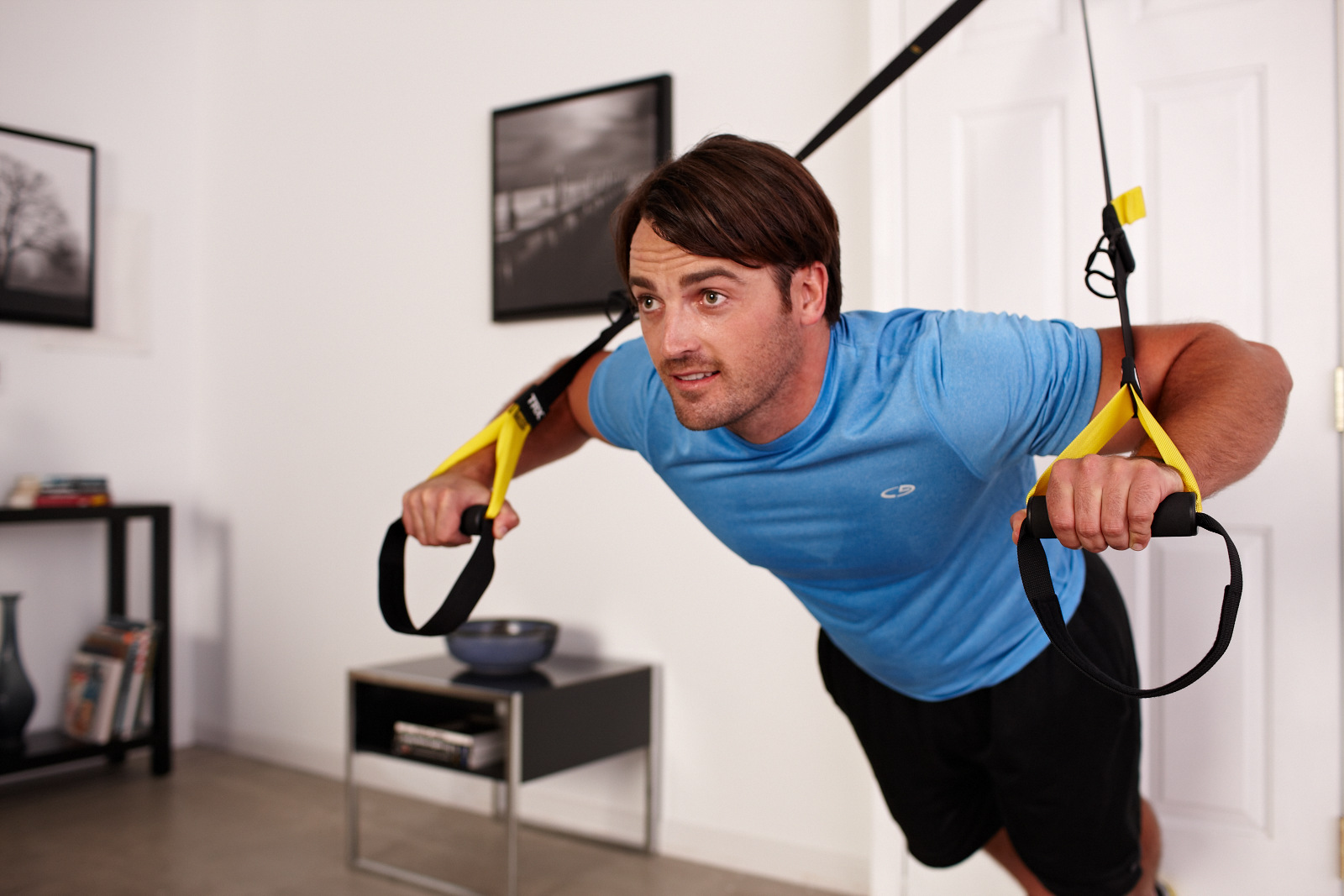
Chest press
- Stand facing away from the anchor, extend arms out in front at shoulder level and keep weight on balls of feet.
- Lower chest towards the ground and bend elbows to 90°.
- Press back up, maintaining body alignment.
2. TRX triceps press (straps length: midway)
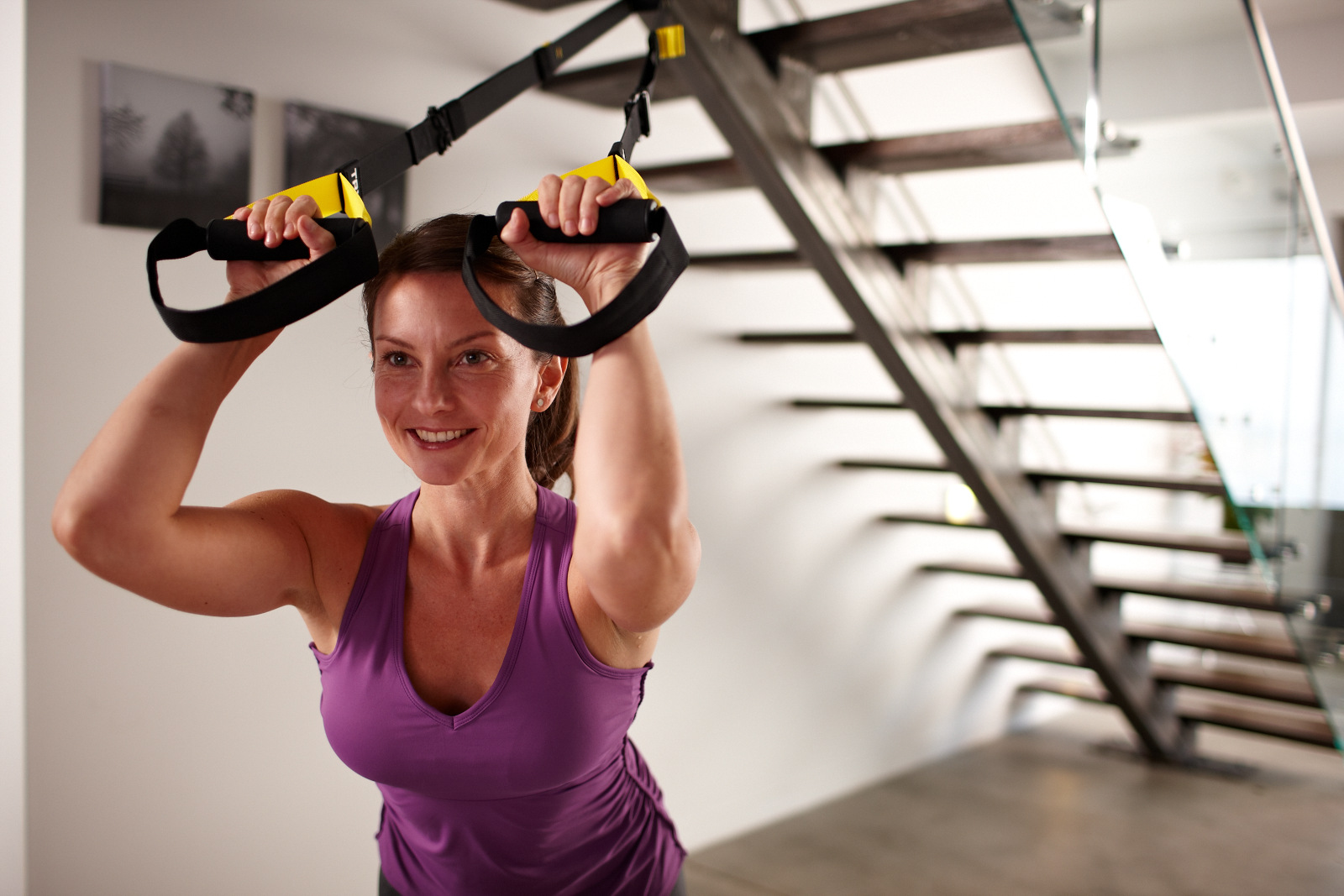
Triceps press
- Stand facing away from anchor, with arms outstretched straight, palms down.
- Bear weight on handles, bend elbows and bring head towards the handles, maintaining body alignment and elbows at shoulder height.
- Return to start position, keeping tension on handles.
3. TRX crunch (straps length: mid-calf)
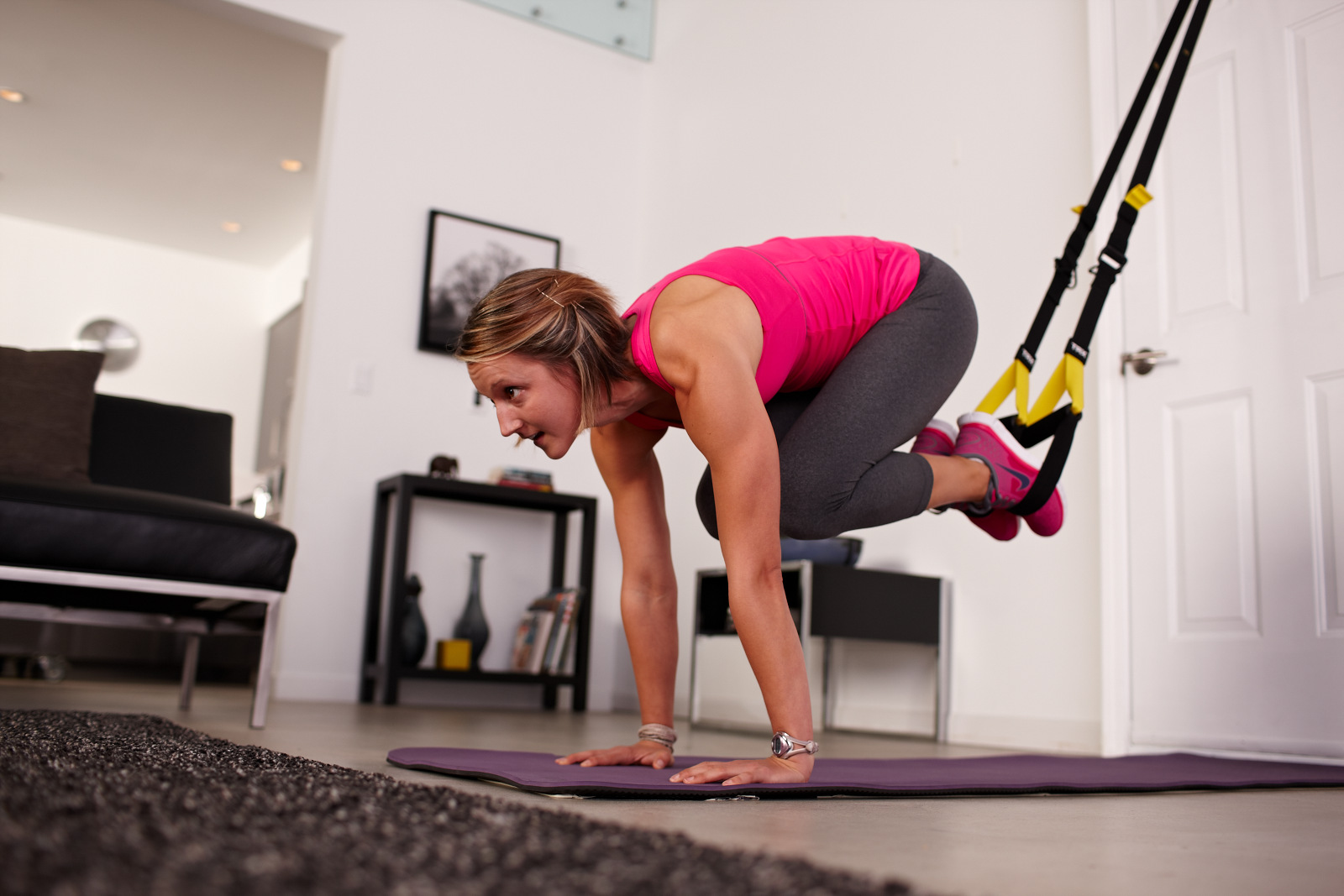
Crunch
- Kneel facing away from the anchor with both feet in foot cradles.
- Align hands under the shoulders and lift knees up off the ground into the plank position.
- Maintain body alignment from head to toes and pull knees up to chest.
- Return back to plank position and repeat.
4. TRX mountain climber (straps height: mid-calf)
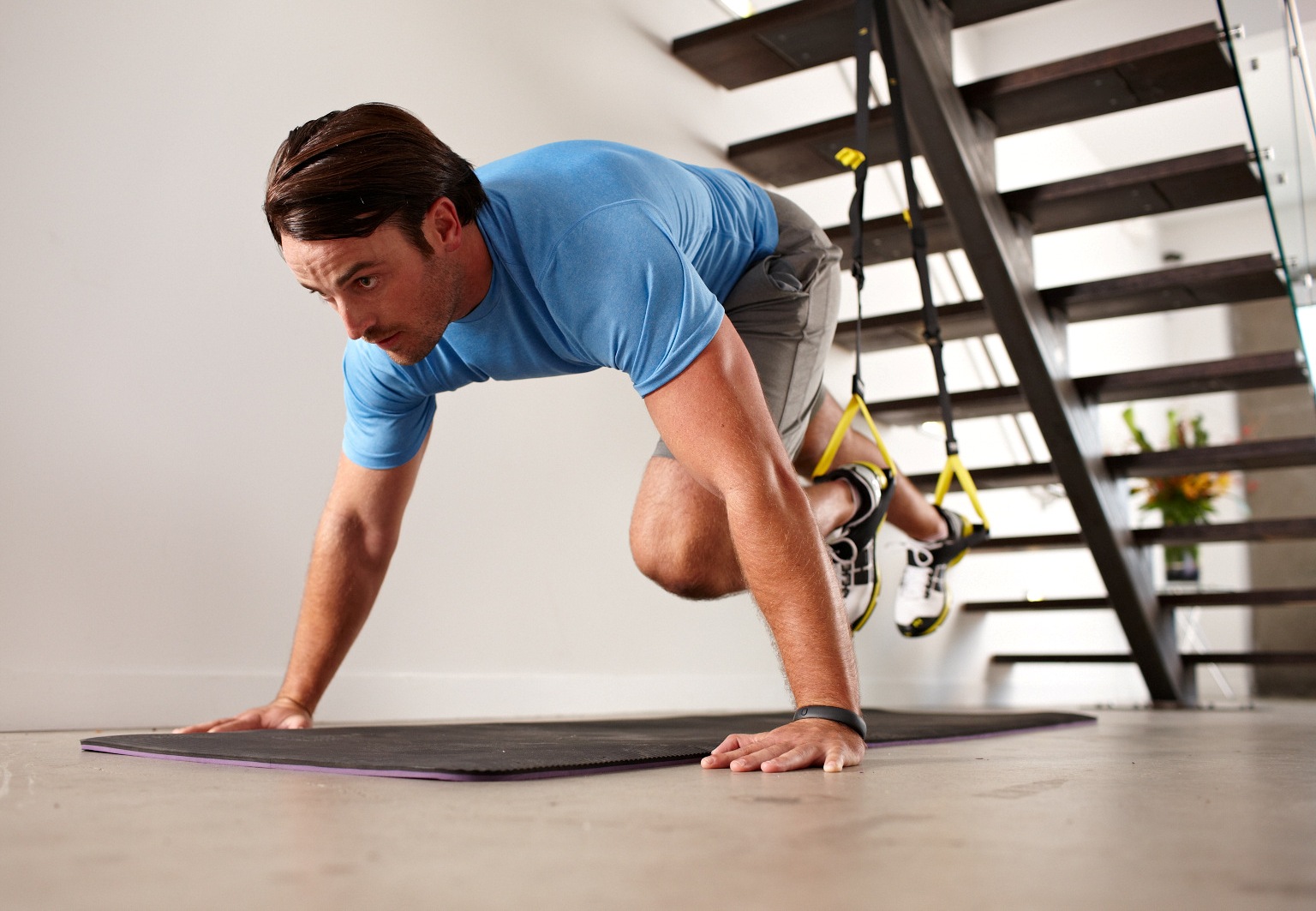
Mountain climber
- Kneel facing away from anchor with both feet in the foot cradles and align hands under the shoulders.
- Lift knees off the ground, raising the hips slightly as you bring one knee towards the chest.
- Alternate and then add in a pike by keeping both legs extended and lifting hips up to the ceiling as you bring your eyes’ gaze towards your toes.
5. TRX lunge (straps height: mid-calf)
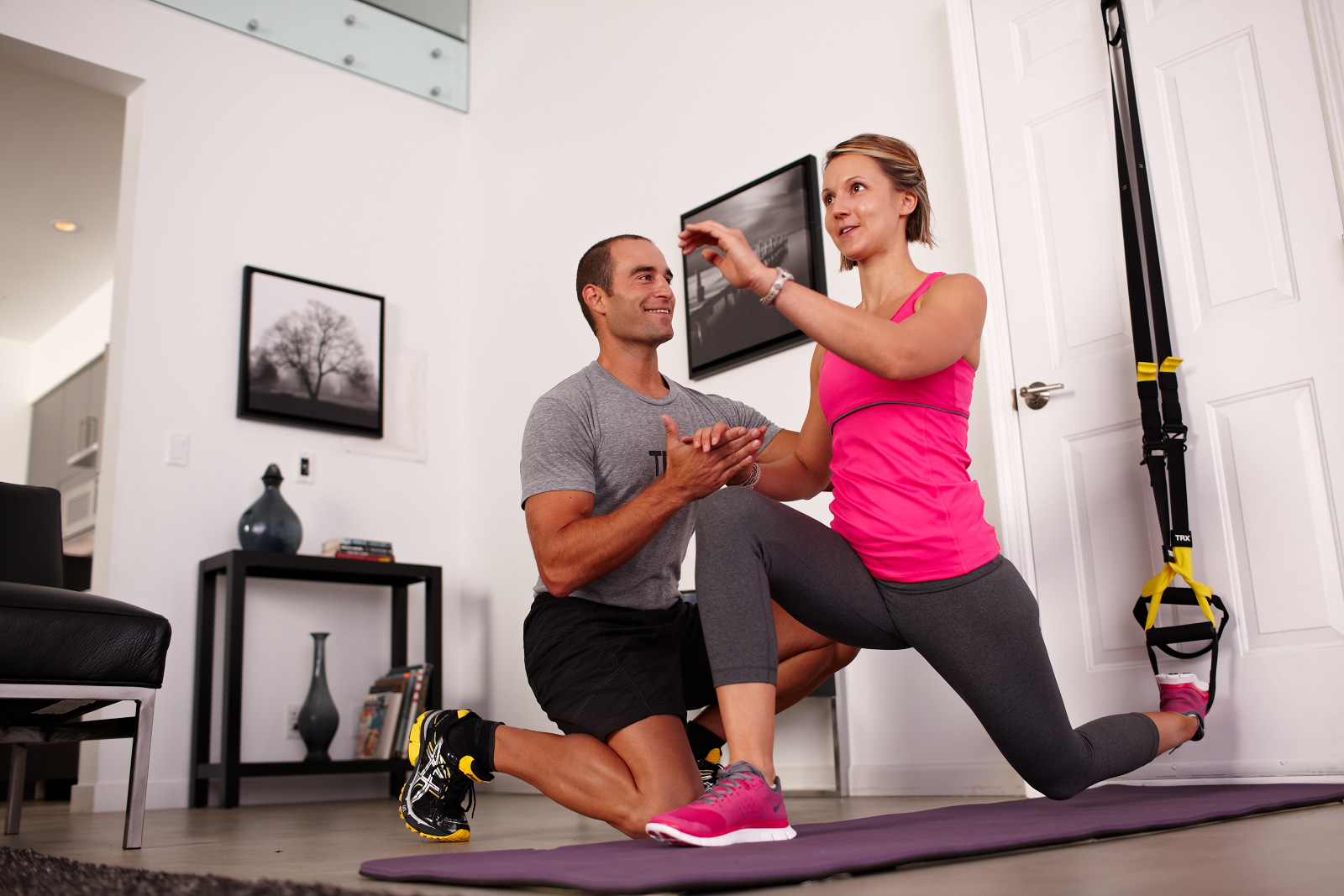
Lunge
- Stand facing away from the anchor with one foot in the foot cradle under the anchor point.
- Lower down into a lunge to a 90° bend in the standing leg’s knee joint.
- Drive up through the standing foot to start, keeping your body upright, and add a hop off the floor as a progression.
6. TRX power pull (straps: mid-length)
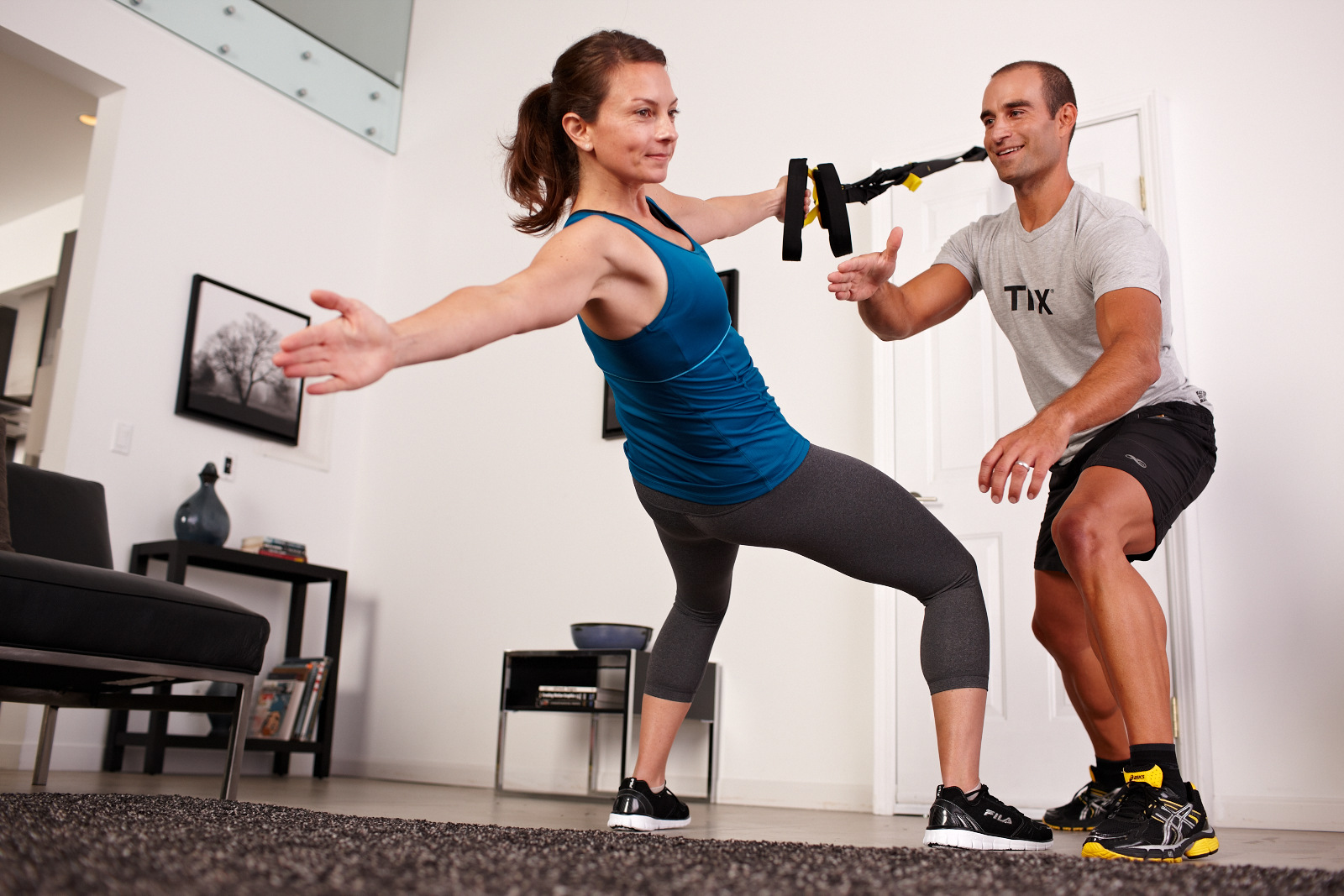
Power pull
- This move provides a large range of motion that integrates back and core rotational strength and control.
- Difficulty can be altered by changing the angle and can also be challenged with external weight in the lower hand.
- Drive the movement from back and core so as not to rely just on the pulling arm.
7. TRX plank (straps length: mid-calf)
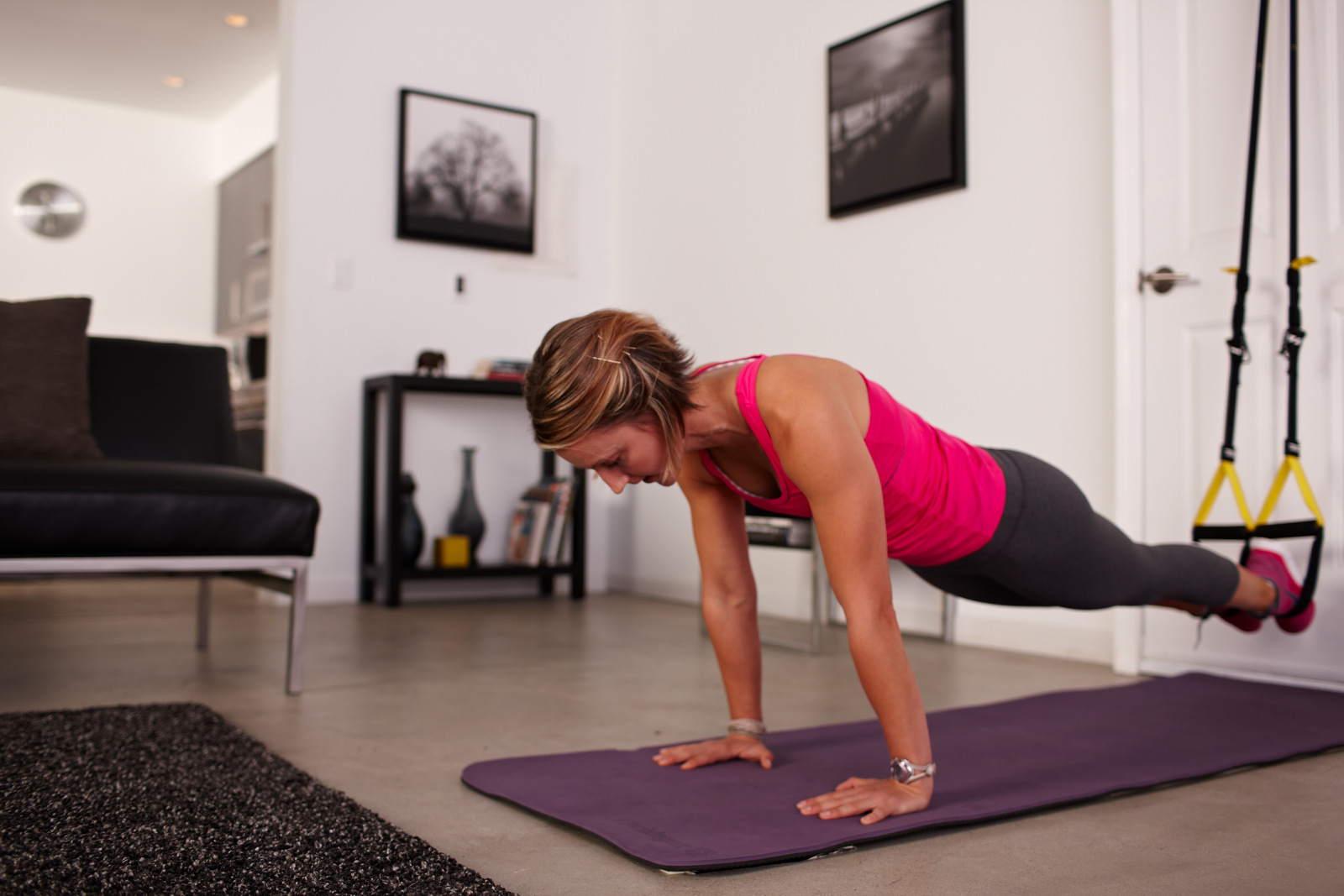
Plank
- Kneel facing away from the anchor with both feet in foot cradles.
- Align hands under the shoulders and lift knees up off the ground.
- Maintain body alignment from head to toes.
The TRX Home Suspension Training Kit features the equipment, workouts and education materials needed to perform hundreds of exercises that build strength, flexibility, core stability and power, anywhere, anytime.
ViPR and TRX integrated
Do you enjoy training outdoors? Pontus Wärnestål, member of the ViPR global educator team shares his video Circuit Training with ViPR, TRX, Kettlebell, Clubbell, Roman Rings in 24 minutes.
The video is a high-intensity interval protocol (90secs of work vs 30secs of rest) with whole-body integrated movements (all planes of motion) using tools such as ViPR, TRX, kettlebells and clubbells. There is also some plyo work (e.g., in the ViPR shift + jump station).
You can discover more content and videos from Pontus Wärnestål on his blog page here: pontuswarnestal.wordpress.com/
References
- Patel K (2014), The Complete Guide to Bodyweight Training, Bloomsbury publishing, London, 14-25.
- LeMond G, Hom M (2015), The Science of Fitness: Power, Performance, and Endurance, Elsevier, London, 74-76.


